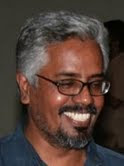ANIL KV SHOW
In-betweening (Tweening, for short), is the process of generating intermediate frames between two images to give the appearance that the first image evolves smoothly into the second image. Inbetweens are the drawings between the keyframes which help to create the illusion of motion. Tweening is a key process in all types of animation, including computer animation. Sophisticated animation software enables one to identify specific objects in an image and define how they should move and change during the tweening process.
Obsessed with ends and extremes, assertions and closures, we lose/forget what is most important in life – what lies in between. Life is always and inexorably lived in detail, it consists of those dull, tiring and long, sometimes exciting and thrilling but other times frustrating and painful, 'in betweens'. Enamoured with landmarks and highpoints, we nullify the in betweens that connect those nodal points, give meaning and direction to them, and fill the gaps and voids, the interstices between the departures and arrivals.
Anil Vasudevan's series of paintings 'In Between' takes up this dilemma of the 'in between' to weave visual narratives that map our lives and times that are apparently fast changing, always moving away, flying between points, destinations, landmarks, stages and full stops.. These images attempt to look at the dizzying change that we are participants to most often as mute witnesses. These radical shifts are not only those happening in time, but also ones that transform the landscapes we inhabit beyond recognition, redesigning the very stuff and pace of the sensations and experiences that make our lives. It is a despairing attempt to reclaim continuities and make sense out of this dizziness that marks the march of time in our times. It thus reclaims history through memory reimaging certain images, between then and now, between before and after, between childhood and youth, between past and present, between nostalgia and reality. The key frames that form the extreme ends of each triptych function as the 'key frames' while the in between work as a link, a path or a poser between the two.
These images excavated both from the past/childhood and the misty present, are poignant with their autobiographical charge. They are also images of a fast developing metro, the desperate attempts of an artist to make sense of his time and place, that is increasingly and dizzyingly whirling away to nowhere

